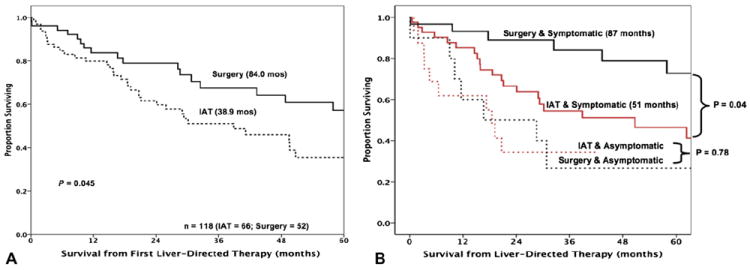Figure 2.

(A) Overall survival of propensity-matched patients stratified by receipt of surgery vs intra-arterial therapy (IAT) (p = 0.04). (B) Kaplan-Meier survival for propensity-matched patients with >25% hepatic tumor burden undergoing either IAT or hepatic resection of neuroendocrine liver metastasis (NELM). Patients with high-volume symptomatic disease benefited the most from surgical management (median survival: surgery, 87 months vs IAT, 51 months; p = 0.04). With kind permission from Springer Science+Business Media: Annals of Surgical Oncology, Surgery versus intra-arterial therapy for neuroendocrine liver metastasis: a multicenter international analysis, vol 18, 2011, pages 3657–3665, Mayo SC, de Jong MC, Bloomston M, et al, Figures 3C and 2 [8].
